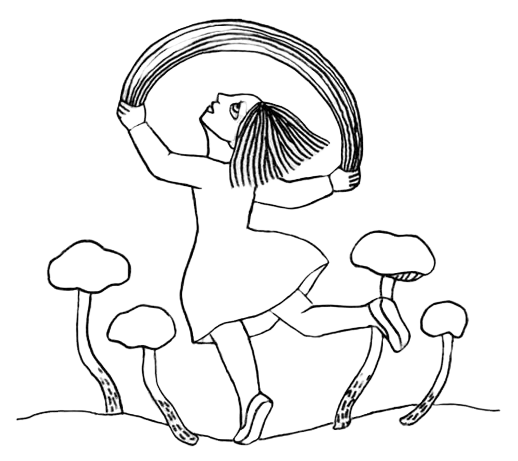17 November 2022, Kobe
A spider specimen collected on November 2 was covered in mycelium. After culturing, synnemata began to develop. Judging by their color, it appears to be Gibellula dimorpha, though the small size of the sterile tips on the synnemata was initially concerning.
Microscopic examination revealed distinctly lemon-shaped conidia, confirming that the species is indeed Gibellula dimorpha.
At the time of collection, the specimen was only covered with a thin, cottony layer of mycelium, and not even a small portion of synnema was visible. I placed the specimen on damp tissue inside a sealed container (a plastic food storage box) and left it undisturbed. Within two weeks, it had developed to near full maturity. Such rapid growth is rarely observed in the wild.
The microscope photo of the synnema was stitched together from 13 individual images, and that of the conidiophore from 11. With the camera firmly fixed to a tripod, this level of quality is easily achievable using the collimated light method.






7 November 2022, Kobe
Visited the nearby S Valley today. As usual, the only finds were Taiwan Ant Cordyceps and Gibellula dimorpha, but the main purpose was to practice using the ring light. Other than that, just a Ganoderma lucidum (Reishi mushroom) turned up.





22 October 2022, Kobe
Visited the nearby S Valley today. As usual, the only finds were Taiwan Ant Cordyceps and Gibellula dimorpha, but the main purpose was to practice using the ring light. Other than that, just a Ganoderma lucidum (Reishi mushroom) turned up.






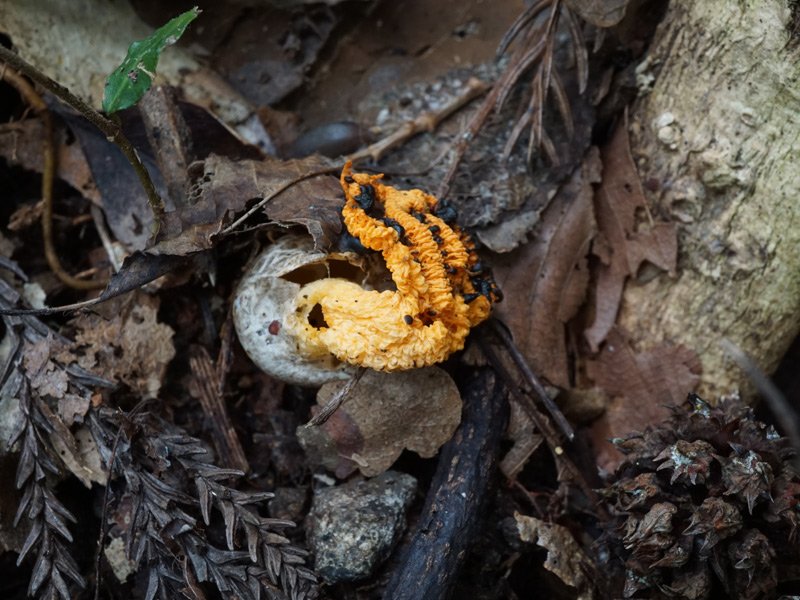

10 October 2022, Kobe
On October 10, I headed to the back side of Mount Rokko. Since not much time had passed since the heavy rain, there weren’t many mushrooms out. The most noticeable was Tremella frondosa, which I spotted in several places.
As for entomopathogenic fungi, I found a few near the river, but I couldn’t take any pictures on-site because my camera battery had run out. Shakutorimushi Harisenbon and Torrubiella were first-time finds for me in Kobe. Gibellula dimorpha was also a first for the back side of Mount Rokko.












26 September 2022, Kobe
Went to the back side of Mount Rokko. A fair variety of mushrooms were out, though not in large numbers. As for entomopathogenic fungi, the only notable find was Ophiocordyceps rubiginosiperitheciata, which was abundantly present. As a bonus, I also came across Monotropastrum humile and Sciaphila japonica.















5 September 2022, Kobe
Went to the back side of Mount Rokko to check on mushrooms before the typhoon hits. There weren’t many out, just a few boletes.
The one highlight was encountering a particularly beautiful specimen of Podostroma cornu-damae, one of the finest I’ve seen. I found it at the bottom of a valley, slightly off the mountain trail. Perhaps it’s no longer possible for them to grow this well in areas where people frequently pass.
There weren’t many entomopathogenic fungi either. The season for the grassland-growing Ophiocordyceps nutans seems to be ending, and I only found one decent specimen. Ophiocordyceps appendiculata was also scarce. As a bonus, I came across Thismia japonica.














23 August 2022, Kobe
This is another spider-pathogenic fungus I found on August 19 in the back of Mount Rokko. As of the 19th, the mycelium had barely developed. The first photo was taken on August 21, and the second on August 23. I examined it under the microscope, but couldn’t determine its identity.
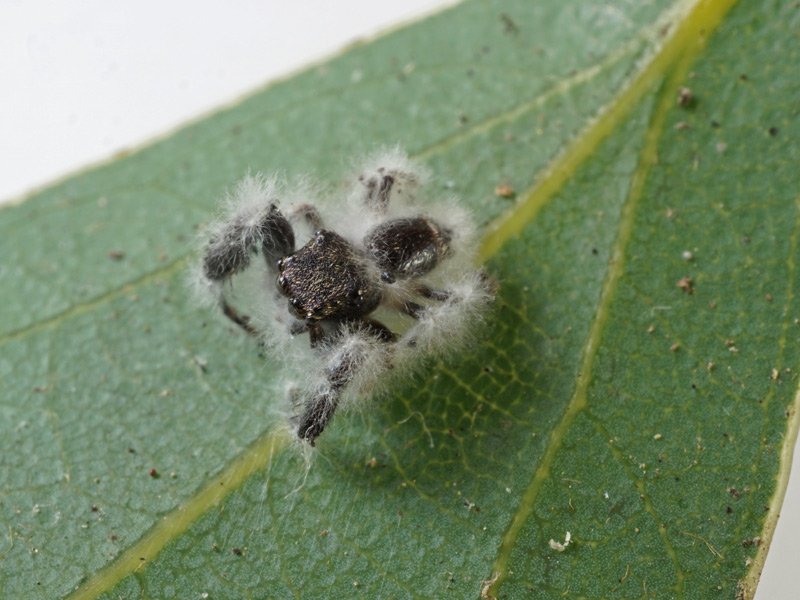




22 August 2022, Kobe
Visited a nearby park. Recently, every time I came here, I collected cicada corpses and placed them in one spot. Today, I noticed that while many had been torn apart by ants, more than half had started to develop some kind of fungus. There were about 40 with Isaria takamizusanensis, four with Beauveria bassiana, one with Metarhizium, and several with unidentified fungi.
I brought home about ten specimens. This time, instead of culturing them indoors, I plan to place them on the ground in my garden. The rest I intend to distribute throughout the park. Choosing locations is tricky because of the presence of wild boars.
The one Metarhizium specimen I found seems to be Metarhizium anisopliae based on its coloration, rather than M. cylindrosporum. I examined it under the microscope, and it does appear to be M. anisopliae.







19 August 2022, Kobe
Went to Mt. Rokko’s backside and surveyed along a stream. Isaria takamizusanensis was particularly noticeable, with all the hosts in this area being Tanna japonensis (Higurashi). Other findings included Isaria tenuipes, Conoideocrella tenuis, and Ophiocordyceps nutans—three specimens were found deep in the mountains, likely this species, with the host being the Plautia stali stink bug. There was also an unidentified Isaria. Apart from entomopathogenic fungi, few other mushrooms were present.
The Podostroma cornu-damae (Poison Fire Coral) was in the same spot as before. The previous ones were gone, but new ones keep emerging. Apparently, mites can touch them without issue.













26 July 2022, Kobe
This morning (July 26), I went to the nearby H Promenade. One of the great things about Kobe is that you can quickly access the mountains from the city, but climbing about 100 meters of steep slope is quite tough. Every few meters along the path, I came across mushrooms. There were many large boletes that I couldn’t quite identify. Aside from boletes, there were also Amanita species and some Russula as well.
The crowds of mushrooms were still there, but their numbers had noticeably decreased.














22 July 2022, Kobe
I found several entomopathogenic fungi today. An immature wasp fungus (Ophiocordyceps sphecocephala) had a notably large host. There was also an unidentified immature species growing on decayed wood, likely Cordyceps pruinosa. In addition, I came across a well-developed specimen of Cordyceps cardinalis.
I also revisited a known spot for Ophiocordyceps nutans after ten days and saw several new ones emerging. One specimen of Gibellula was also found.
And finally, today’s highlight, I never expected to encounter such a specimen in Kobe. A beautifully mature Akanthomyces aranearum (coral spider fungus).






2 June 2022, Kobe
I went to the nearby S Valley. There were only a few mushrooms, but they’ve started to emerge. With a couple more rains, they’ll likely start appearing in abundance.
Today’s target was Cordyceps sinensis (Chinese caterpillar fungus). I found six newly emerging specimens. One of them had such a distinctly different color that I’m uncertain whether it belongs to the same species.





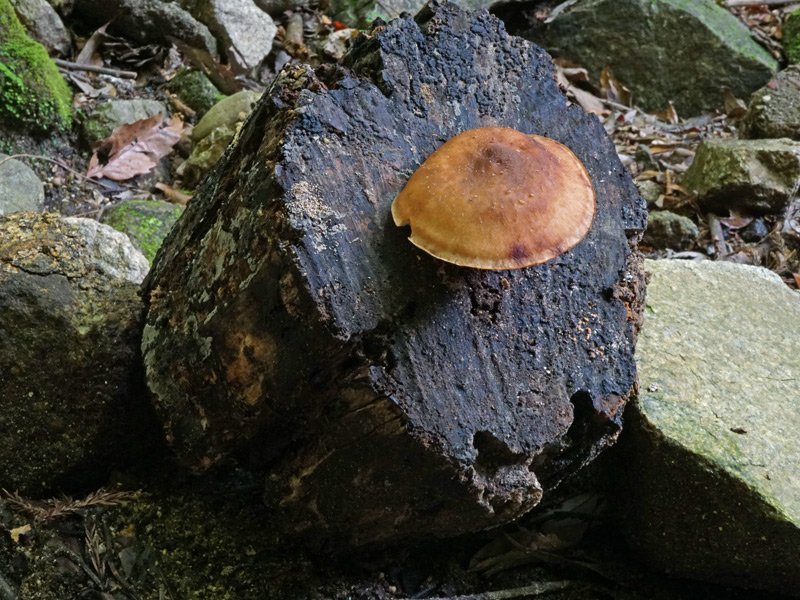




30 May 2022, Kobe
The host of Elaphocordyceps ophioglossoides (Ophioglossum fungus), which I collected on May 10 and have been cultivating, had developed vivid orange mycelium as of the 30th. Upon cutting it open, it appeared to be a non-netted Elaphomyces species. Meanwhile, the host of the spring-type Elaphocordyceps capitata growing nearby was identified as Elaphomyces granulatus (netted earthball). This suggests that in this particular site, two species of fungal insect pathogens are utilizing two different species of Elaphomyces as their respective hosts.




15 May 2022, Kobe
I photographed the host of Metacordyceps kusanagiensis (Kusanagi-hime tanpotake), which I recently collected in Kyoto Prefecture. The known hosts for this species are Didia nasutella and Didia spirotricha, but this specimen appears to be different from either. I searched online for related species that might resemble it, but so far, I haven’t found a clear match.




20 April 2022, Kyoto
Today I went to Kyoto. I didn’t have any luck finding Ophiocordyceps heteropoda (Ōsemi-take), which was my main target, but I did find three specimens of Elaphocordyceps capitata (Jimushi). One of them appeared to be a co-infection with Polycephalomyces formosus (Shirosango-take). Given the conditions, I have a feeling there might be a large emergence in about a month.
The ground was dry, so there weren’t many mushrooms to be found. However, I did see Monotropastrum humile (Ginryōsō) growing in various places.
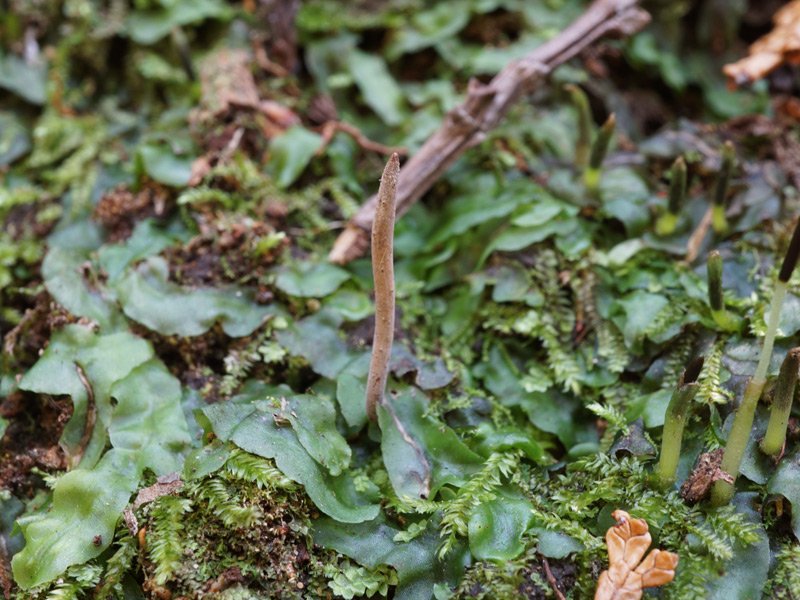




5 March 2022, Kobe
Returned to the S Valley after a long time. Both Elaphocordyceps japonica (Numetanpo-take) and Elaphocordyceps ophioglossoides (Hanayasuri-take) have just begun to emerge; it feels noticeably later compared to other locations.
Other than that, the usual Gibellula dimorpha was found.






3 January 2022, Kobe
After dropping off New Year’s cards, I continued on to the back hills for my first mushroom outing of the year. As expected for this season, mushrooms were scarce, but Tsubakin was found growing as anticipated.
As for entomopathogenic fungi, the first specimen I encountered was a shriveled Beauveria, which did not feel like a very auspicious start. However, I did find four specimens of Gibellula dimorpha, potentially fitting for the Year of the Rabbit, and four of Taiwan ant fungus (Ophiocordyceps formicarum). Interestingly, at this location, they always seem to appear exclusively on the underside of Aucuba leaves.












